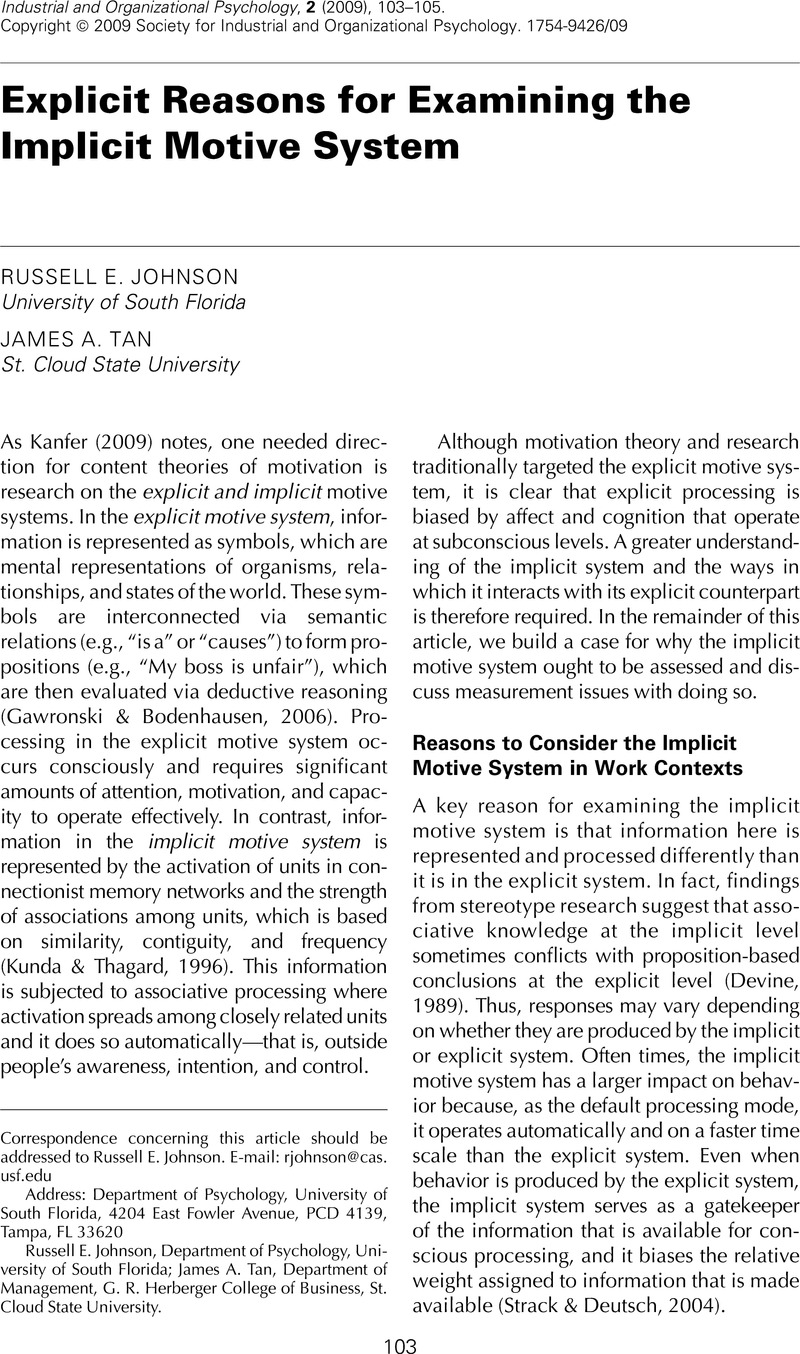Crossref Citations
This article has been cited by the following publications. This list is generated based on data provided by Crossref.
Kanfer, Ruth
2009.
Work Motivation: Advancing Theory and Impact.
Industrial and Organizational Psychology,
Vol. 2,
Issue. 1,
p.
118.
Latham, Gary P.
and
Piccolo, Ronald F.
2012.
The effect of context‐specific versus nonspecific subconscious goals on employee performance.
Human Resource Management,
Vol. 51,
Issue. 4,
p.
511.
Uhlmann, Eric Luis
Leavitt, Keith
Menges, Jochen I.
Koopman, Joel
Howe, Michael
and
Johnson, Russell E.
2012.
Getting Explicit About the Implicit.
Organizational Research Methods,
Vol. 15,
Issue. 4,
p.
553.
Koopman, Joel
Howe, Michael
Johnson, Russell E.
Tan, James A.
and
Chang, Chu-Hsiang
2013.
A framework for developing word fragment completion tasks.
Human Resource Management Review,
Vol. 23,
Issue. 3,
p.
242.
Valero, Domingo
Nikitin, Jana
and
Freund, Alexandra M.
2015.
The effect of age and time perspective on implicit motives.
Motivation and Emotion,
Vol. 39,
Issue. 2,
p.
175.
Sargent, Rikki H.
and
Newman, Leonard S.
2020.
An Investigation of Civilian Implicit Attitudes Toward Police Officers.
Journal of Police and Criminal Psychology,
Vol. 35,
Issue. 3,
p.
360.
Seih, Yi‐Tai
Lepicovsky, Marketa
and
Chang, Yi‐Ying
2020.
Your words reveal your thoughts: A two‐wave study of assessing language dimensions in predicting employee turnover intention.
International Journal of Selection and Assessment,
Vol. 28,
Issue. 4,
p.
484.





